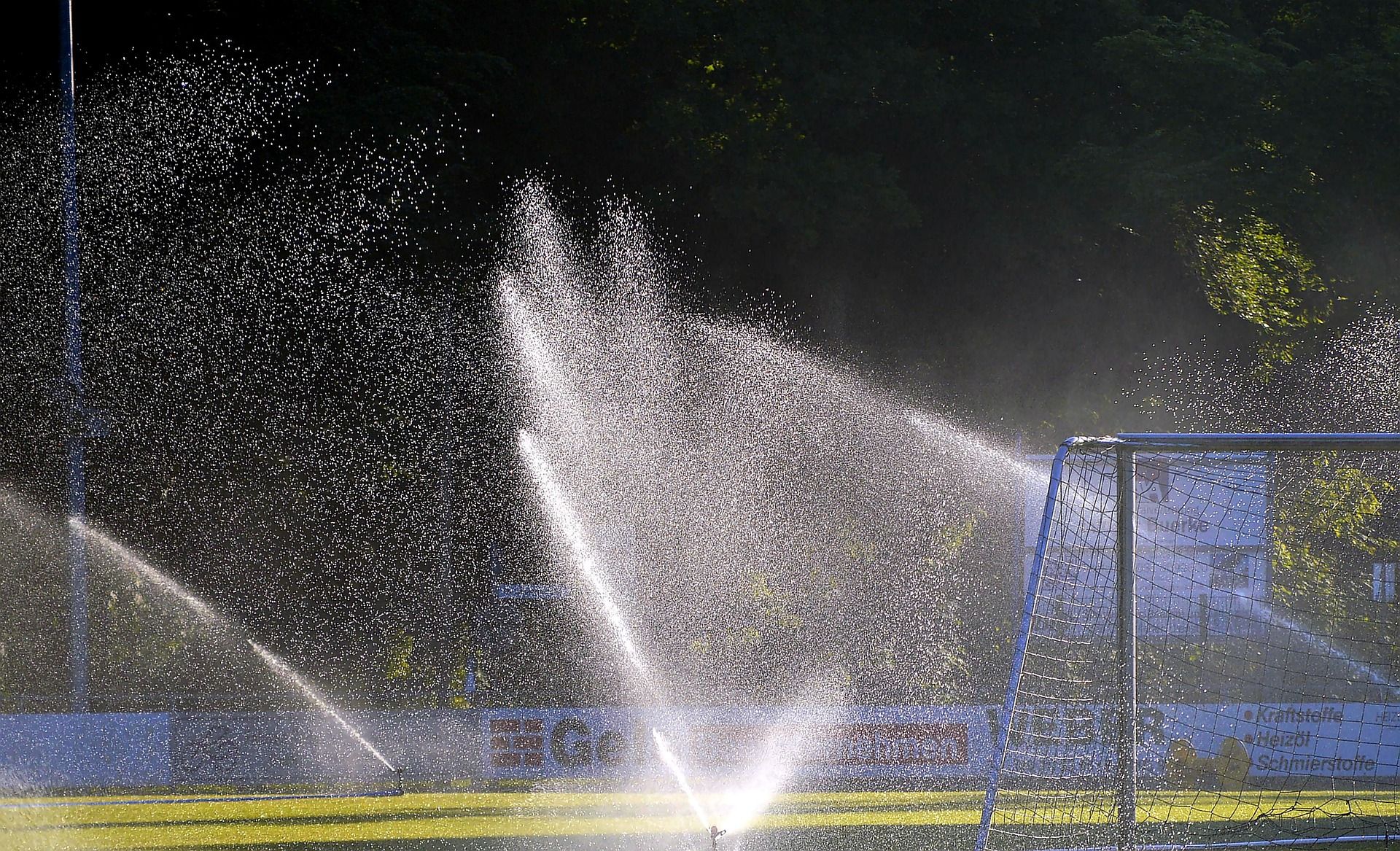Thursday 10 July 2025
Keeping Pitches Alive in A Dry Spell: Practical Tips for Grounds Teams

The UK is no stranger to unpredictable weather, and this summer is a reminder of just how testing the extremes can be. With large parts of the country now under hosepipe bans, grounds people are faced with the real challenge of keeping pitches playable and safe with very little water to work with.
Having worked closely with grounds teams over the years, we know that keeping turf in top shape isn’t just about appearance - it’s about protecting the surface for player safety and preserving the long-term health of the grass. Here’s a practical, pitch-side view of how to adapt when water is scarce.

💡 Rethink Your Mowing Routine
In dry conditions, every pass with the mower needs to be intentional. Raising the height of cut is a simple adjustment that makes a huge difference - it allows the grass to stay stronger, shade its own roots and push deeper into the soil for moisture.
Where possible, mow early in the morning or as the sun starts to dip in the evening. It’s cooler then, so there's less evaporation and the turf isn't under as much stress. Also, if the grass has browned off or isn’t growing, give it a break - mowing it won’t revive it and might even make things worse.
Golden rule: never cut more than a third of the grass height in one go. That holds true even when the weather turns.
💧 Be Strategic With Water
Full pitch watering isn’t an option right now. Instead, focus efforts where they matter most - areas like goalmouths, wicket ends or high-wear training zones. These zones take the most traffic and need the most help staying safe.
Avoid watering during peak sunshine hours - you’ll lose more to evaporation than the turf will absorb. And if you’ve got access to germination sheets, use them wisely after watering to help trap moisture -just be mindful of the risk of disease if covers are left on too long.
If you’re expecting rain, applying a wetting agent in advance can help maximise what little water does fall, allowing it to soak deeper and last longer.
🛠 Hold Off on High-Stress Maintenance
Now isn’t the time for scarifying, brushing or anything else that could stress the grass out. These tasks are brilliant when the ground’s in good shape but during a drought they can do more harm than good.
Likewise, steer clear of feeding the turf with fertilisers or using herbicides. Without the moisture to help the plant recover, these products can burn the grass and set you back weeks.
✅ Prioritise Player Safety
Hard ground can quickly become unsafe, especially in contact sports. Keep an eye on surface hardness and don’t be afraid to make the call if areas become unplayable. Communication is key, make sure coaches and players are aware of any temporary changes or surface limitations.
🌧 Store Water When You Can
If your facility doesn’t already have a rainwater harvesting system, now’s the time to consider it. Capturing rainfall when it does come and storing it in tanks or butts can give you a small but vital reserve for the weeks ahead.
Final Thoughts
Grounds teams are often the unsung heroes of sport, working behind the scenes to make sure pitches are not only playable but safe and enjoyable for all. In a summer like this, your decisions matter more than ever. With careful planning, smart prioritisation, and a few adjustments to routine, it’s absolutely possible to get through a drought without sacrificing surface quality.
And remember - sometimes the best thing you can do is give the grass a rest.
Christmas Closure:
We will be closed from 25th Dec 2025 – 1st Jan 2026.
We’re here to support you up to 24th Dec and we reopen on 2nd Jan 2026.
Should you need assistance before the break, please do get in touch, we’re here to help.
If you would like to leave us a message, we will respond on our return: